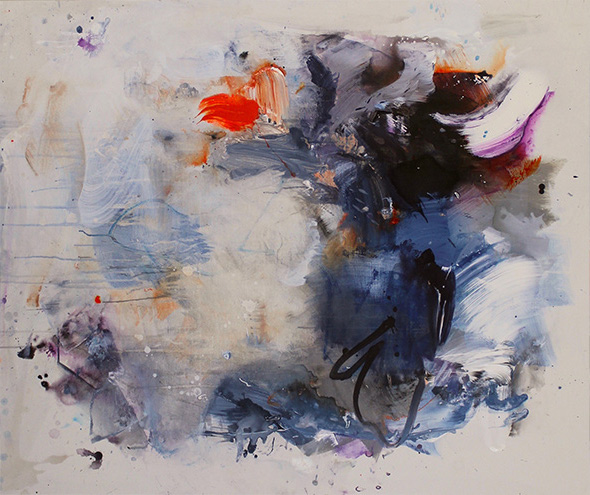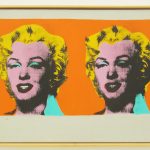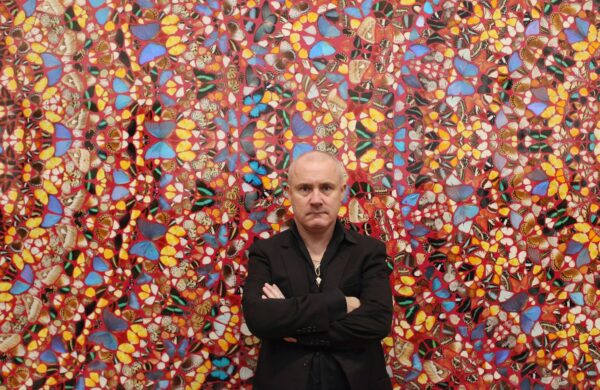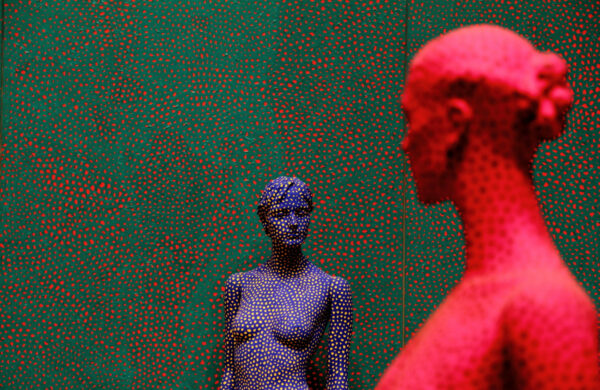Making an abstract piece of art might look easy… Some even say it’s so easy, that they could make a brilliant piece of abstract art themselves.
However, the concept behind what makes good abstract art is beyond making it. Furthermore, to everyone who thinks that with using only a brush, paint, and a canvas they can create anything close to the next big Franz Kline, go ahead – I encourage you to try it.
Abstract art is about the meaning, the context and concept rather than the aesthetics and visual appeal. If you were to copy an abstract painting, for example, the purpose behind your artwork would be almost non-existing. Without any meaning, purpose, intention, expression and skill, Abstract Art wouldn’t be as exceptional as it’s considered to be.
In this article, I shall be talking about what determines good and “bad” abstract art and how you can then spot the difference between the two.
What is Abstract Art?
Abstract art is a key style of the Modern Art movement. Founded in the 20th-century, it represents an important cultural and artistic shift during Modernism. Abstract Art is, essentially, a departure from one reality to another. It sums the socio-political change artists from that era were going through and it represents a rupture from traditional, conventional and is also a critical reflection on the naturalist-classicist cultural conventions that were the norm until then.
The viewer perception of this style is as one of a gateway from the reality. Although total abstraction has no connection to our knowledge, some partially abstract works can keep us in the conscious realm. One could say abstract art is about artists portraying how they feel. Abstract Art is not about representing real life but about representing and emulating real life emotions and sensations. Depending on the artists, Abstract Art has also become about the process of creating an artwork itself without relying on any objective visual representation.
Unlike other styles, Abstract does not portray objects as they appear in the real world. Before the emergence of this style, artists focused on representing society and their respective communities and – quite frankly, mostly nature and naturalist landscapes and subjects were at the centre of what was considered good art. Abstract artworks experiment with the use of texture, tone, and light perception. It’s a breakthrough from the traditional ideals and it’s basically a search for new visual experiences. With abstract works, artists can express their emotions through experimental techniques rather than expressing themselves through portraying particular objects or scenes.
Sometimes, abstract expressionism is showed as the best example of abstract art. However, abstract art covers other art movements as well: neo-Dada, conceptual art, neo-expressionism, installation, performance, video and pop art – all these important art movements have ties with Abstract Art.
Most notable and well-represented abstract painters include: Wassily Kandinsky, Jackson Pollock, Mark Rothko, Franz Kline, Piet Mondrian, Helen Frankenthaler, Agnes Martin.
What Makes Good Abstract Art?

It isn’t easy especially for art newbies, to tell the difference between bad and good Abstract Art. Even for art experts, it can be difficult sometimes. But, we can now all agree with this: Good Art is about intent. It doesn’t matter if we are talking about hyperrealism, pop art, abstract art, etc. Good art is made with the purpose of conveying some sort of message and concept.
More so, there are definitely some more aspects to look at when you want to differentiate good from bad art.
Meaning
Nowadays, abstract paintings are about the portrayal of ideas that represent some sort of socio-political utopia. This shift started in the late 1940s when the visual and interpretative aspect of an artwork shifted inwards towards the existential self. The first form of abstraction was less politically explicit than those of the Constructivists. By the ’70s, and, thanks to the Nozkowski paintings and ideas, artworks then became about a subjective perspective and open interpretation.
Among the most stunning features of abstract expressionism, the extensive use of ‘theory’ is very much present. If we look with attention, the most well-perceived artworks in the world, have an extensive context behind them. Emotions, whether positive or negative, are expressed in the canvas. If the artwork was made randomly without meaning, then it lacks personality.
Abstraction requires a narrative that allows the artist to express themselves on another level. Emotion, sensations and memories are necessary in order to create something with meaning.
Consistency
When you watch a movie or read a book, there is a coherent wire that connects the storyline together. With abstract expressionism and other art forms, the same happens. If an artist shows you a portfolio with random graphic expressions and different stylistic languages, it probably means that they’re still developing their own style. So, in that case, there isn’t much consistency. And the same goes for a unique artwork. The flow of an artwork altogether must feel consistent, cohesive and strong.
Texture
Abstract art requires layers. Actually, lots of layers. Usually, there is an underpainting that will transform until the end due to the layers creating different textures.
Colour
Colours that don’t stay together nicely or aren’t pleasant visually, lack something, and that is usually skill. Professional artists of this style know how to mix and match colours properly. Colour pallets are highly studied before the creation of any masterpiece.
Complexity
The more an artist produces, practices and studies, the best they get at using new techniques. Opposite to what you may think, the techniques used in this style aren’t easily replicated. Inappropriate paint strokes will tell you if the artist is an amateur. Experienced artists are confident and make every mark and stroke intentionally.
What Makes Bad Abstract Art?
Bad abstract art can be easy to make, but it’s not that easy to spot. You can be looking at a great copy of a Pollock or Franz Kline artwork that is great as a copy, but bad regarding all the aspects mentioned above on the importance of an authentic context, purpose, skills and techniques.
Bad abstract art can also be spotted by how the colours, texture, and complexity (un)match together. The way that a brush marks itself in a canvas is also important and requires skill and a good eye to understand.
How to Appreciate Good Contemporary Art
Don’t Just Look and Walk Away
When I started working in this industry, I used to write press releases for art exhibitions and art galleries. Most of the time, not many people would actually read the press release. Sometimes people would come up to me and tell me “I don’t understand that”. So, I would tell them to read the paper and then get back to me. It was truly amazing to see how their perception of the artwork changed after reading it. It was as if they had a “Eureka” moment. So, if you are interested in knowing more about abstract art, don’t forget to read the press release in the next exhibition you attend.
Don’t Insult the Artist
“My kid could have done that”. This is one of the most usual comments you hear when visiting an art gallery or museum to see abstract art. In the beginning, I used to get a bit upset and angry when people would tell that about any of my artists. Over time, I started understanding that people who say this don’t understand art and, furthermore, they never asked their kids to paint that either. Again, if you think that you can copy an abstract artwork, go ahead and then dm us if you were successful. Chances are that you will not be successful in doing so.
Don’t Take the Title Too Serious
Most of the time, abstract artworks will have vague titles. This has a reason: Artists want you to interact with the painting in order to create your own meaning. More so, don’t completely ignore the title. It’s better to find an equilibrium point.
Do Let the Painting Interact With You
Have you ever notice that some museums have chairs/benches in the middle of the rooms? They are there for a reason. To let the painting ‘speak’ with you. Observe the colours, the textures, the ambience… What makes you feel? Good, bad, angry, mad…? Paintings can confront you with your own emotions.
Why is Some Abstract Art So Expensive?
More often than I wish, I’m surprised with comments diminishing the worth of abstract art. Most people don’t understand how a picture that has no figurative elements can be sold for such high amounts. As an example, we have a piece of Willem de Kooning sold in 2015 for 300 million. Yeah you read it correctly 300 million.
Abstract Art is sold for big amounts as any other style sells for big amounts. There is demand for it. Factors as conspicuous consumption (the spending of money in acquiring luxury goods and services in order to display economic power). Art investment and market speculation also play an important role here. Once some people buy art as an investment, some artworks will get more and more expensive over time. The artworks that are able to make it to the high-end market are also the ones with the best quality according to the market trends and forecasts. If you would like to know more about it, check the artworks sold at Sotheby’s, Christie’s, Phillips and Boham’s.
Conclusion
- Abstract art is a key style of the Modern Art movement.
- Good abstraction requires a narrative that allows the artists to express themselves on another level.
- Bad abstract art is easier to do, however not that easy to spot.
- Your kid couldn’t do that.





Anyone can make art, but not everyone can sell art. Some people buy art as in the story of the emperor’s new clothes. One pushes it as beautiful art, and the sheep follow.
I am a self taught artist. A couple years ago i had studied a little with an abstract artist and i got a little better and a little better. Ive painted 80 to 100 paintings. The one thing i can say about moving into abstract area of painting is that it was not easy. I was better if i had an assignment at first. Now its much easier because i have developed a style of my own.
Thanks the insight.
G Maestas
Reading this article on a bad or good art that states that the good abstract art is the one that can not be copied thus should the realism art or hyperrealisam or any other visual art be of lesser value one may consider. There are artists who make copies of recognised masters and artists works pretty much successfully. Unless something is made by dye cast nothing can be as identical in every detail as an original no matter how skilful is the artist who does the copying.
Abstract art with its planed or random chosen placements of the brush strokes coverering the next and the next one may completely or partialy obliterate previous brush strokes wich become not visible, become lost to the naked eye thus not evident to copy giving the status to artwirk as uncopyable. The invisible brush strokes may or may not add to the texture of the art work.
I may humbly add that good art being abstract or hyperrealisam is extrimrly hard to classify and placed into one mould. When viewer is in visual relationship with a piece of art that particular individual will react emotionally differently to that piece of art than the previous viewer, viewre being the subsequent or the one viewing the art piece in the real time and space. So if any viewer feels that his child can do it then that is the reaction to the effect what that piece had on that individual as a viewer. The viewer has been honest about it according to his perception. One should not scorn that viewer’s opinion just because his reaction is lacking praiise. Other viewer may feel entirely different, beeing full of praise. It poses the question whether that vierwer should be considered having some supperior inner knowledge and is more of an expert. The thought of value of any art piece is variable from person to person but overall it sits in with how it speaks to the viewer.
Kids do make great Abstract art. Why? Because most have not been programmed. They care little about “inside the box or outside of it.”